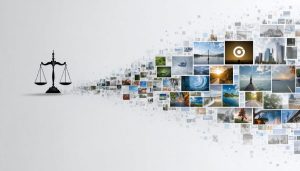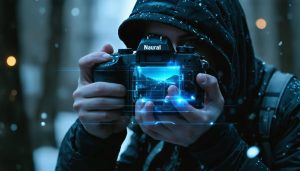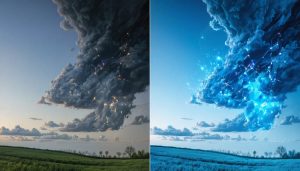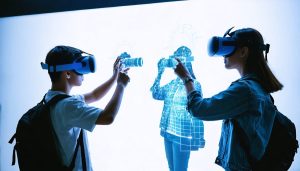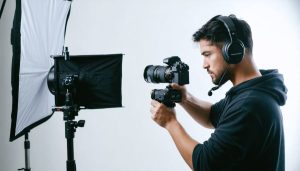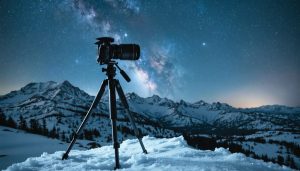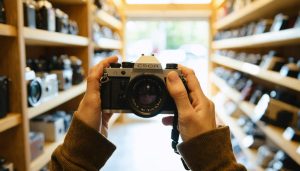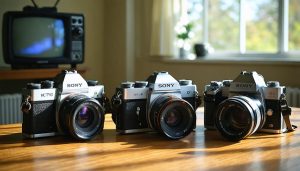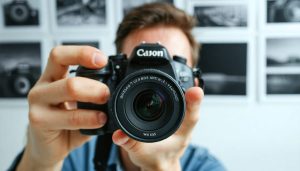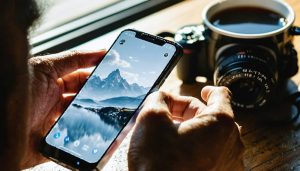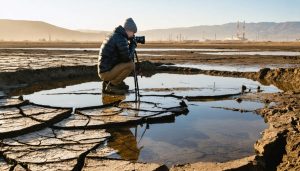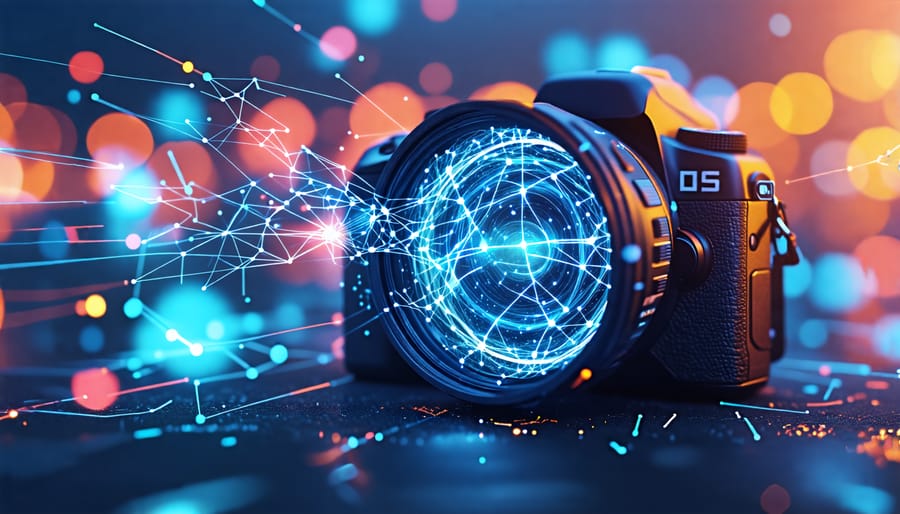
Harness the power of artificial intelligence to revolutionize your photography. AI-powered cameras automatically optimize settings for stunning shots in any condition. Intelligent editing software like Adobe Sensei dramatically simplifies post-processing, allowing you to enhance images with just a few clicks. Machine learning algorithms can now organize your entire photo library by recognizing faces, objects, and scenes. The latest smartphones put professional-grade AI photography tools right in your pocket, enabling breathtaking computational photography and mind-blowing night mode captures. As the technology rapidly advances, artificial intelligence is poised to become an indispensable asset for photographers of all skill levels, ushering in a new era of creative possibilities and effortless excellence behind the lens.
Intelligent Auto Settings
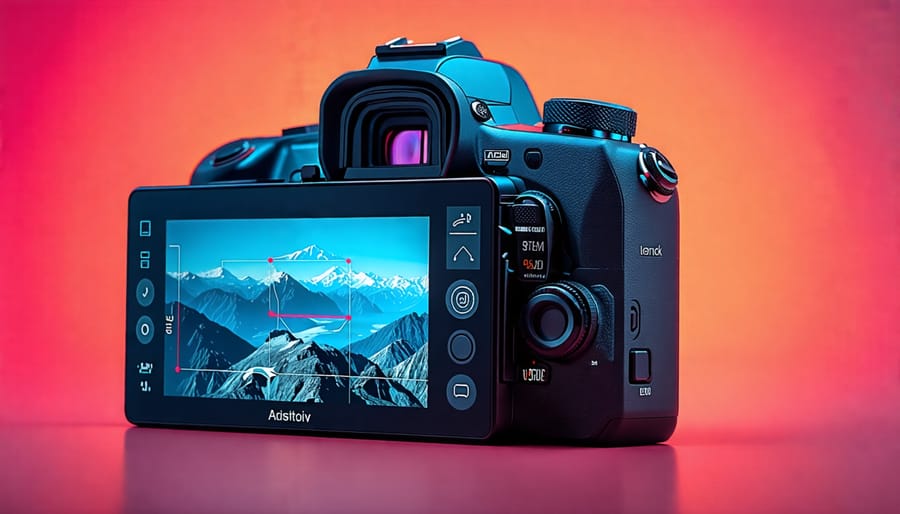
Real-world examples
Many camera manufacturers are integrating AI into their latest models to make photography more accessible and intuitive. For example, Sony’s Alpha series of mirrorless cameras uses AI-powered real-time tracking to keep subjects in focus, even when they’re moving. The Canon EOS R5 employs AI to optimize image stabilization, reducing blur in low-light situations. In the smartphone world, Google’s Pixel phones leverage AI to enhance images with features like Night Sight and Portrait Mode, while Apple’s iPhone 12 Pro uses AI for its Deep Fusion technology, which intelligently merges multiple exposures for stunning detail. Adobe’s Photoshop Camera app harnesses AI to automatically apply creative filters and corrections based on a photo’s content, making professional-grade editing accessible to everyone. As AI continues to advance, we can expect to see even more intelligent features that simplify the technical aspects of photography, allowing creators to focus on their vision.
Benefits for photographers
Artificial intelligence is revolutionizing the way photographers capture and edit their images. AI-powered cameras can now automatically adjust settings like focus, exposure, and white balance in real-time, ensuring that every shot is perfectly optimized for the scene. This takes the guesswork out of manual adjustments, allowing photographers to concentrate on composition and creativity. When it comes to editing, AI algorithms can intelligently analyze images to make precise local adjustments, such as selectively enhancing colors, reducing noise in shadows, or sharpening details. These advanced tools save photographers countless hours of manual editing work while delivering professional-grade results. Moreover, AI-based photo management systems use machine learning to recognize and categorize images by subject, location, or style, making it effortless to organize and retrieve specific shots from vast collections. With the power of artificial intelligence at their fingertips, photographers can spend more time behind the lens and less time fiddling with settings or sifting through archives.
AI-Powered Editing Tools
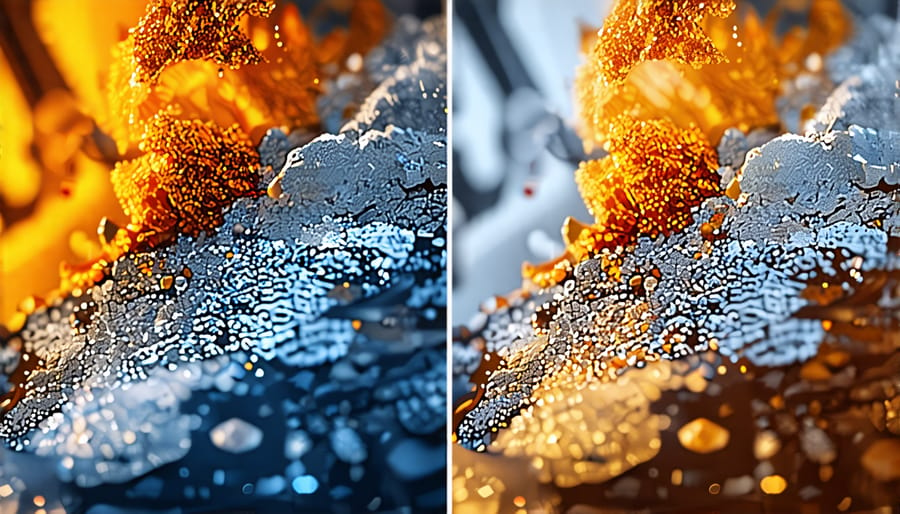
Automatic adjustments
AI algorithms can analyze the content, composition, and technical attributes of an image to provide intelligent editing suggestions. By recognizing objects, faces, and scenes, AI tools can recommend adjustments to enhance specific elements or optimize the overall image. For instance, AI may suggest cropping to improve composition, adjusting exposure to balance highlights and shadows, or applying selective edits to emphasize the subject. These AI-powered recommendations take into account established photography principles and aesthetics, helping users quickly improve their images. Some AI tools even learn from a photographer’s past edits, adapting suggestions to match their unique style preferences. With the ability to analyze thousands of images in seconds, AI enables efficient batch editing and consistent results across a series of photos. As AI algorithms continue to evolve, they will become increasingly adept at understanding the creative intent behind an image and offering personalized editing guidance to bring that vision to life.
Style transfer and effects
AI-powered style transfer and creative effects are revolutionizing the way photographers edit and enhance their images. These innovative tools harness the power of deep learning algorithms to apply artistic styles from famous painters or create unique, eye-catching filters. With just a few clicks, you can transform your photos into masterpieces that resemble the brushstrokes of Van Gogh, the bold colors of Picasso, or the dreamy landscapes of Monet.
One of the most exciting aspects of AI-driven style transfer is its ability to preserve the essential details and composition of your original image while infusing it with the chosen artistic style. This means you can experiment with various looks without compromising the integrity of your photograph. Whether you’re looking to add a touch of impressionism, a hint of surrealism, or a dash of pop art, these tools offer endless creative possibilities.
In addition to artistic styles, AI-powered effects can also help you enhance your images in more subtle ways. From intelligent color grading and tonal adjustments to sophisticated post-processing techniques, these tools streamline the editing process and allow you to achieve professional-looking results with minimal effort. As AI continues to evolve, we can expect even more advanced and intuitive style transfer and effects options to emerge, empowering photographers to push the boundaries of their creativity.
Facial Recognition and Tagging
From organizing shoeboxes of prints to clicking through folders on our computers, sorting photos has always been a challenge. But what if your photo library could organize itself? That’s exactly what AI-powered facial recognition and tagging brings to the table.
Imagine uploading a batch of photos and having an intelligent system automatically detect, recognize, and tag the people in each image. It’s like having a personal assistant who knows every face in your collection. This technology is a game-changer for photographers drowning in a sea of unnamed files.
Face tagging relies on deep learning algorithms that analyze facial features, comparing them against known individuals in your library. Over time, the AI gets smarter, learning to accurately identify people even as their appearance changes. It can differentiate between similar-looking family members and handle challenging angles or lighting conditions.
The benefits are immense. No more manual tagging or guesswork. You can easily find all photos of a specific person with a simple search. Creating albums becomes a breeze – just select the faces you want to include. It’s also a handy way to see how people change over time, as the AI can track faces across years of photos.
Many popular photo apps, like Google Photos and Apple Photos, now offer built-in facial recognition. It’s a feature that seemed futuristic just a few years ago, but is quickly becoming a must-have for anyone serious about organizing their photo collection. As AI continues to advance, we can expect even more impressive capabilities in the future, making it easier than ever to keep our precious memories in order.
Smarter Smartphone Cameras
Computational photography
Computational photography harnesses the power of artificial intelligence to push the boundaries of what’s possible with a camera. By leveraging advanced algorithms, photographers can now capture stunning images in challenging scenarios that were once considered impossible. High Dynamic Range (HDR) photography is one such technique, allowing you to preserve details in both the brightest highlights and darkest shadows of a scene. AI-powered HDR modes intelligently blend multiple exposures to create a final image with an expanded dynamic range, bringing out the best in every shot.
Low-light photography has also been revolutionized by AI. Capturing sharp, noise-free images in dimly lit environments is no longer a pipedream. Cutting-edge AI algorithms analyze and combine multiple frames to reduce noise, enhance detail, and produce clean, vibrant results. Whether you’re shooting a candlelit dinner or a starlit landscape, AI-driven low-light modes ensure you never miss a moment due to poor lighting conditions.
These computational photography advancements aren’t limited to high-end cameras. Many smartphones now boast AI-powered imaging capabilities, putting professional-grade tools in the palm of your hand. With just a few taps, you can elevate your smartphone photography and create images that rival those captured with dedicated gear. As AI continues to evolve, the possibilities for computational photography are endless, empowering photographers to push their creativity to new heights.
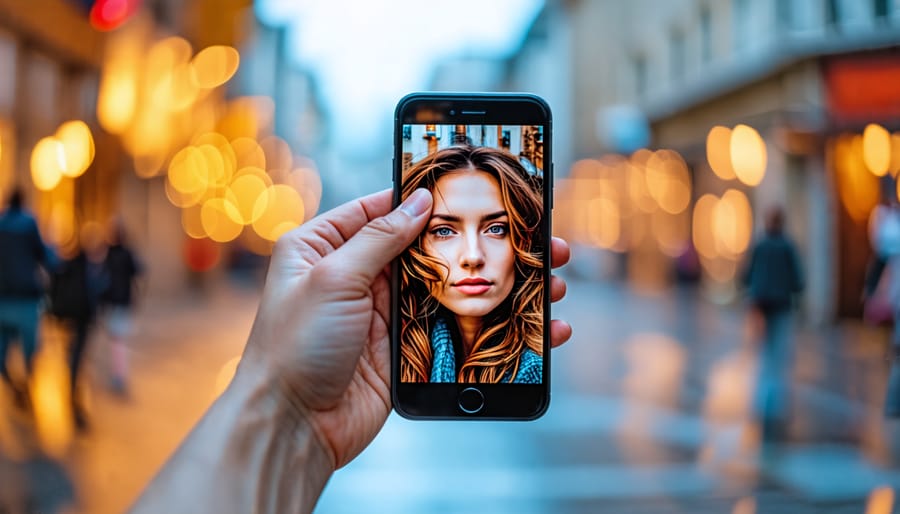
Portrait modes and bokeh
Artificial intelligence is revolutionizing portrait photography by enabling smartphones to capture DSLR-quality images with beautifully blurred backgrounds, known as bokeh. AI algorithms analyze the scene and subject, then intelligently apply blur to areas identified as the background. This mimics the shallow depth-of-field effect achieved with wide apertures on professional cameras. The AI separates foreground from background, even with complex edges like hair, to create a natural-looking blur. It can also adjust the amount and style of the bokeh. With AI portrait modes, anyone can now create stunning, professional-looking portraits using just their smartphone camera. As this technology advances, it opens up new creative possibilities for photographers of all skill levels.
The Future of AI in Photography
The future of AI in photography looks incredibly promising, with numerous exciting developments on the horizon. As artificial intelligence continues to evolve, we can expect to see even more advanced features and capabilities integrated into our cameras and editing software. One area that is ripe for innovation is the use of AI for real-time image enhancement. Imagine a camera that can automatically adjust settings based on the scene, optimizing factors like exposure, focus, and color balance in mere milliseconds. This could revolutionize the way we capture images, making it easier than ever to achieve professional-quality results.
Another promising application of AI is in the realm of creative editing. With the help of machine learning algorithms, photo editing software could suggest artistic adjustments based on the content and style of an image. This might include anything from applying unique filters to seamlessly blending multiple exposures, opening up new avenues for creative expression.
As cameras become increasingly intelligent, we may also see the rise of truly autonomous photography. Picture a drone that can independently navigate and capture stunning aerial shots, or a camera that can track and photograph fast-moving subjects without any human input. The possibilities are endless, and it’s exciting to think about how these innovations in photography could change the way we approach the art form.
Of course, with any new technology, there are bound to be challenges and ethical considerations to address. As AI becomes more integrated into photography, it will be important to have conversations about issues like data privacy, creative ownership, and the role of human artistry in an increasingly automated world. But one thing is certain: the future of photography is looking brighter than ever, thanks to the incredible potential of artificial intelligence.
Conclusion
In conclusion, AI is revolutionizing photography by empowering photographers of all levels to create stunning images more easily than ever before. From intelligent cameras that optimize settings automatically to powerful editing software that streamlines workflows and enables advanced adjustments, AI is making the technical aspects of photography more accessible. Mobile apps are putting AI-powered tools into the hands of casual photographers, while cloud-based AI is helping pros organize and search vast image libraries effortlessly.
As we’ve seen, AI is not replacing the need for photographic skill and creativity, but rather enhancing it. By handling tedious or complex tasks, AI frees photographers to focus on their vision and the art of capturing the perfect shot. As AI continues to advance, we can expect even more impressive innovations in the years ahead.
For photographers of all levels, now is the time to embrace AI and explore how it can elevate your craft. With the right AI tools in your arsenal, you’ll spend less time wrestling with technicalities and more time creating the impactful, compelling images you envision. The future of photography is exciting, and AI is poised to play a central role in shaping it.

